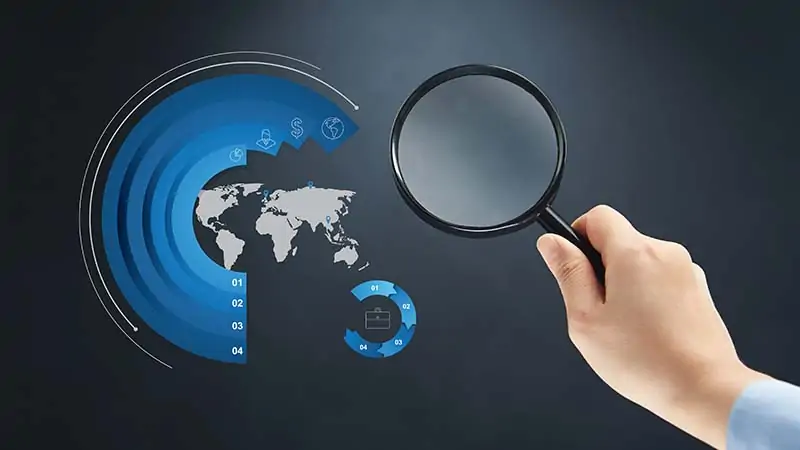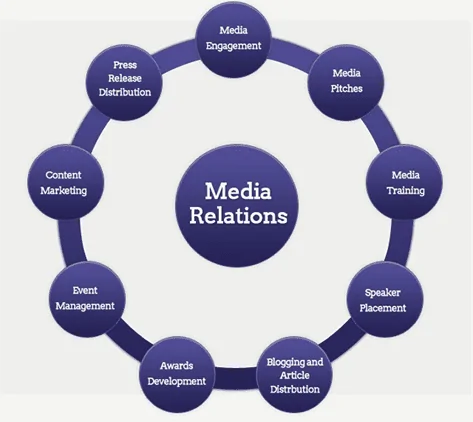Write a brief note on Public Relations Society of India (PRSI).
Public Relations Society of India (PRSI) Formation In 1958, the concept of a national professional association was visualized, but formally the PRSI was registered under the Indian Societies Act XXVI in 1966 in the State of Maharashtra.
Major Objectives of Public Relations Society of India (PRSI).
The following were PRSI’s key objectives adopted in the memorandum of association:
- To promote Public Relations as a profession.
- To interpret to the public the understanding of the objectives, potentialities and functions of the Public Relations personnel.
- To promote and strive to maintain high standards among the Public Relations practitioners.
- To exchange ideas, experiences and information’s on the value of the public Relations practitioners.
- To promote the study and research in Public Relations.
Membership.
Any body, “who devotes the whole or a major portion of his time to the practice of Public Relations” can be a member of the society. With an objective to involve companies, institutions and associations, a special category of corporate members was created. To encourage a larger participation in the PR activity, it also enrolls non-voting members in “associate and student” category. The society has 20 regional chapters and its membership strength in all categories is more than 2500.
PRSI Organization.
The PRSI has a two-tier structure. It has the National Council at the Center as well as the Regional Chapters at the grassroot levels. The Regional Chapters enroll members, hold meetings and workshops and organizes training programs. Each Professional Public Relations Chapter elects its own Chairman, Secretary and members of the executive committee. Each chapter runs under the overall guidance of the National Council.
The National Council elects its own President and other office-bearers. The National President is elected each year at the annual election meeting of the National Council. The National Council has three or more representatives of each chapter. The Chairman and the Secretary of each Chapter are members of the National Council.
The National Council meets four times a year in different parts of the country. Often, the National Council meetings are followed by a national seminar hosted by a local Chapter. The National Council prepares guideline for the Chapters. It also initiates activities relating to education and research and keeps close contact with the Government, Chambers of Commerce, Management Associations, Universities and other educational institutions.
Code of Ethics.
The PRSI adopted a code of ethics in its First All India Public Relations Conference, held in Delhi, in 1968. This Code was earlier adopted, in 1965, by the International Public Relations Associations at Athens, Greece. Thus, it is known as the “Code of Athens” among the world community of Public Relations. The Code is largely based on the United Nations Charter on Human Rights.
PRSI Conferences.
The PRSI had been organizing the All India Public Relations Conference every two years since 1968. In the 1980s, the conference was made an annual event to meet the aspirations of more Chapters wanting to host an All India Conference. The Conference brings in the major users of public relations to present the various uses of public relations in their own environment. Besides, it is an opportunity to educate its own members and members of the allied profession in the effective PR techniques.
Given below are two objectives of the conference:
- It aims to introduce PR as a management discipline in non-user organizations.
- It seeks to improve the professional ability of its own members by exposing them to the usage of public relations.
Prominent persons from the Government, top management of public and private sector organizations, the media, education, science and technology and international.
Public Relations are invited to the Conferences as speakers and resource persons. In 1976, the Conference in Delhi was inaugurated by Fakhruddin All Ahmed, the President of India. Prominent leaders like I.K. Gujral, Vasant Sathe, L.K. Advani and V.N. Gadgil have been closely associated with the PRSI activities on several occasions.
Senior PR professionals are also invited to the conference to make presentations on a large variety of issues concerning the employer the media relations, consumerism, financial PR, employee relations, relations with the government, community relations, crisis communication and other related fields.
At the 1974 PRSI Conference, a presentation was made for the first time on the PR involvement in lowering the level of production waste at a tyre plant: The case study was later on selected for publication in the PR News of New York. Ms. Denny Griswold, the editor of the PR News, had attended the Conference.
After that, the presentation of case studies became a regular feature of the Conference. The delegates looked forward to it with great expectations. Now the PRSI has introduced case study competitions and offers awards to provide recognition to the public relations professionals and their organizations.
PR Education.
The need of PR education was felt by the founding members of the PRSI. Just after the All India Public Relations Conference in 1968, they invited noted American Professor Dr. Scott Cutlip to conduct a Management Development Program in collaboration with the Indian Institute of Mass Communication.
In the 1970s, a series of workshops and seminars were organized by the society through its regional Chapters. In 1973, a two-month refresher course was organized by the PRSI Delhi Chapter. The refresher course was later on organized in Calcutta, Bombay and Madras. The Delhi Chapter organized four PR courses between 1973 and 1976. Meanwhile, a post-graduate programme was organized at the Indian institute of Mass Communication, New Delhi, by the PSRI.
During that time, the PRSI introduced Public Relations as a component of the management development programme at the Administrative Staff College of India, Hyderabad and the Indian Institute of Management, Ahmedabad. .In 1990, the PRSI set up the India Foundation for PR Education and Research to provide an academic and professional base for education and training. The trust was set up after almost ten years of planning in consultation with International Public Relations Association and similar foundations in the UK and the US.
PR Publications by the Indian Authors.
There was no publication based on Indian experience until the mid-1970s. American and British authors were tilt only sources for the Indian PR professionals. To close this gap, the PRSI published Conference volumes which contained contributions from Indian PR practitioners. Public Relations in India by J.M. Kaul was the first Indian publication in the field.
Public Relations: A Scientific Approach by Baldeo Sahai was published next by SCOPE Publications. Public Relations: Problems and Prospects was published by Anil Basu. How to Be a good PRO and a Handbook of Public Relations were authored by C.V. Narasimha Reddi, another PRSI President. Public Relations Manual was recently published Sushi Bahl, the Chairman of the PRSI Bombay Chapter. All these authors were closely associated with the PRSI and contributed towards enriching the profession with a body of knowledge that was completely Indian.
PRSI Fellowship.
In 1974, the PRSI in collaboration with Indian Institute of Management, Ahmedabad, launched the Rs. 50,000 fellowship to a scholar to spend two years in collecting data and case studies of the PR applications from selected Indian companies and organizations.
An experienced faculty nominated by the IIM Ahmedabad guided the entire exercise. Known for its case study-related method of teaching, the IIM recommended extensive documentation of Public Relations case studies of reputed well-managed companies.
The IIM, Ahmedabad, later on put together the research with teaching notes for classroom application. Case studies were compiled included Indian Airlines lockout, 1973, Industrial Conflict in 1975, Christian Medical College and Hospital, Vellore, Organization of Pharmaceutical Products of India, a product launched by Larsen & Toubro and ACC’s village improvement scheme.





